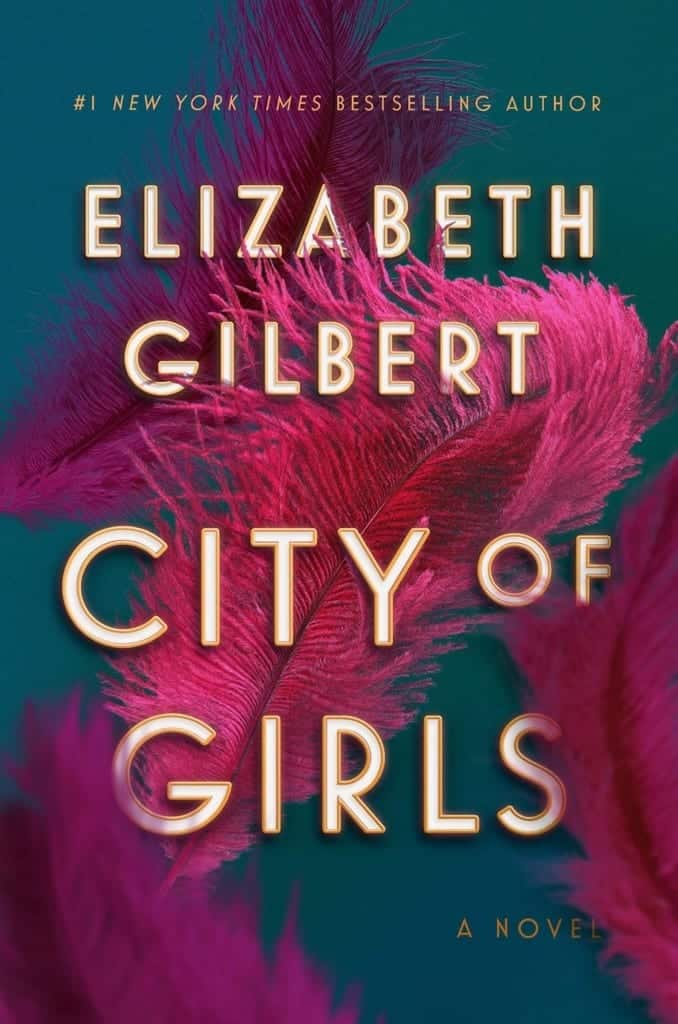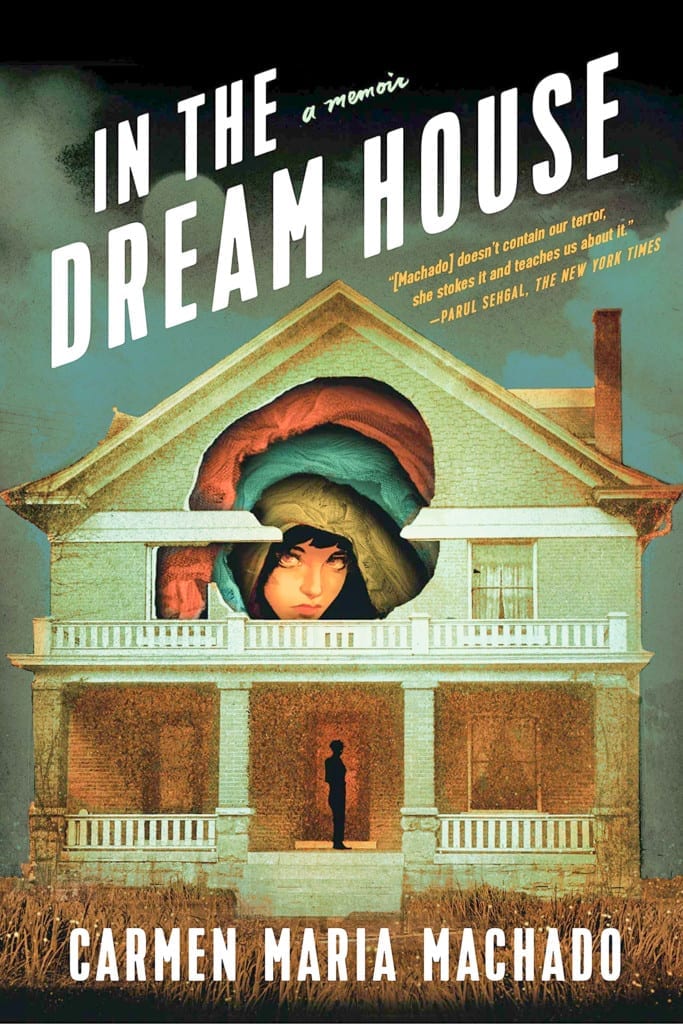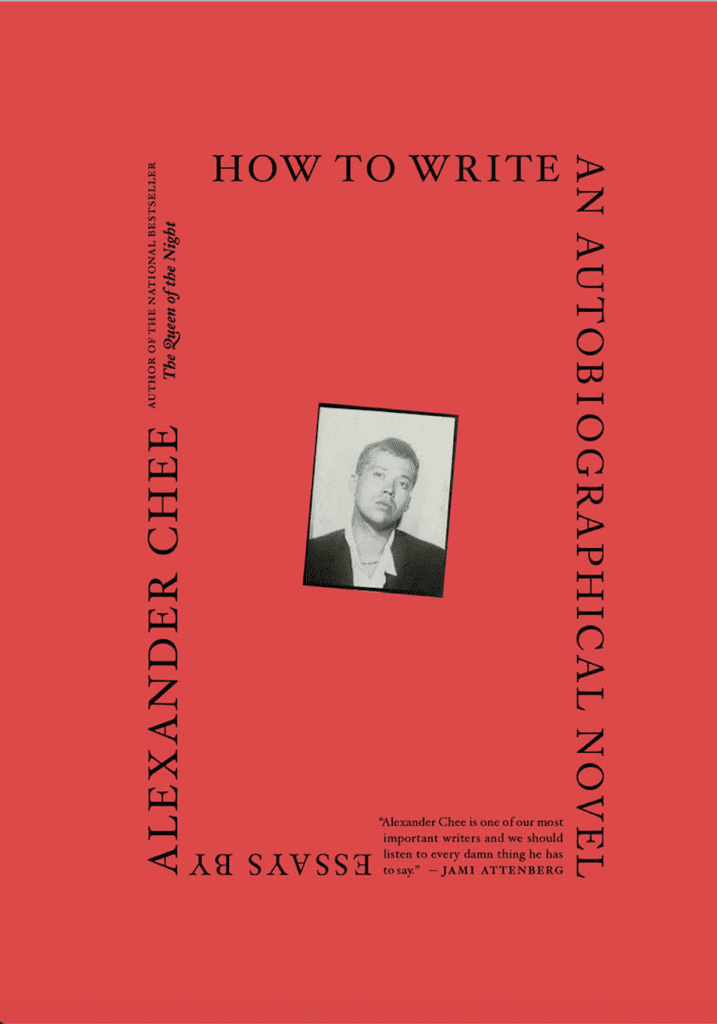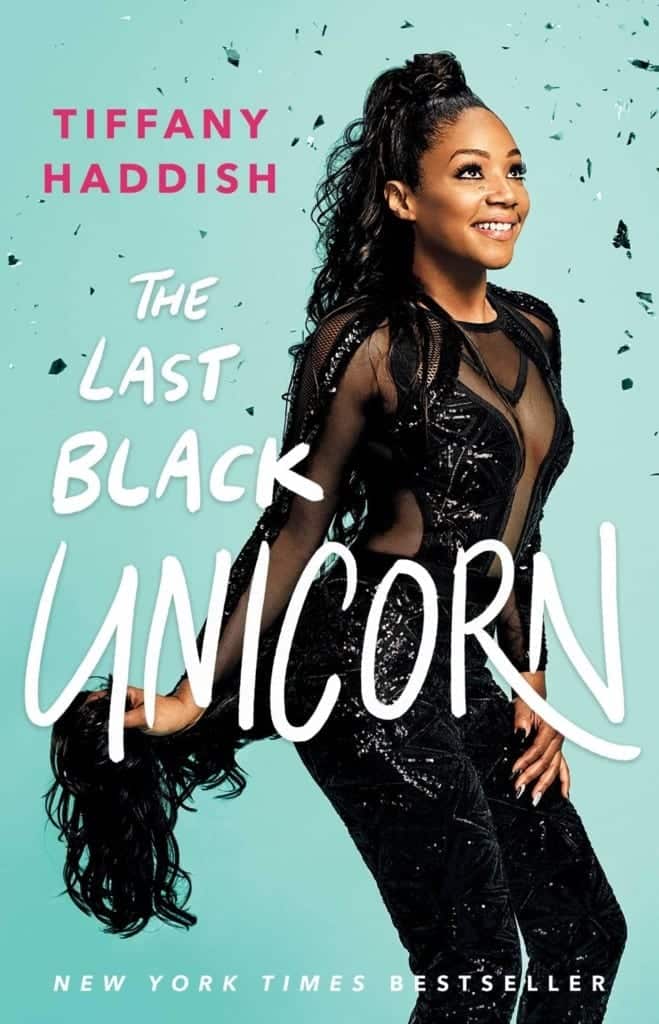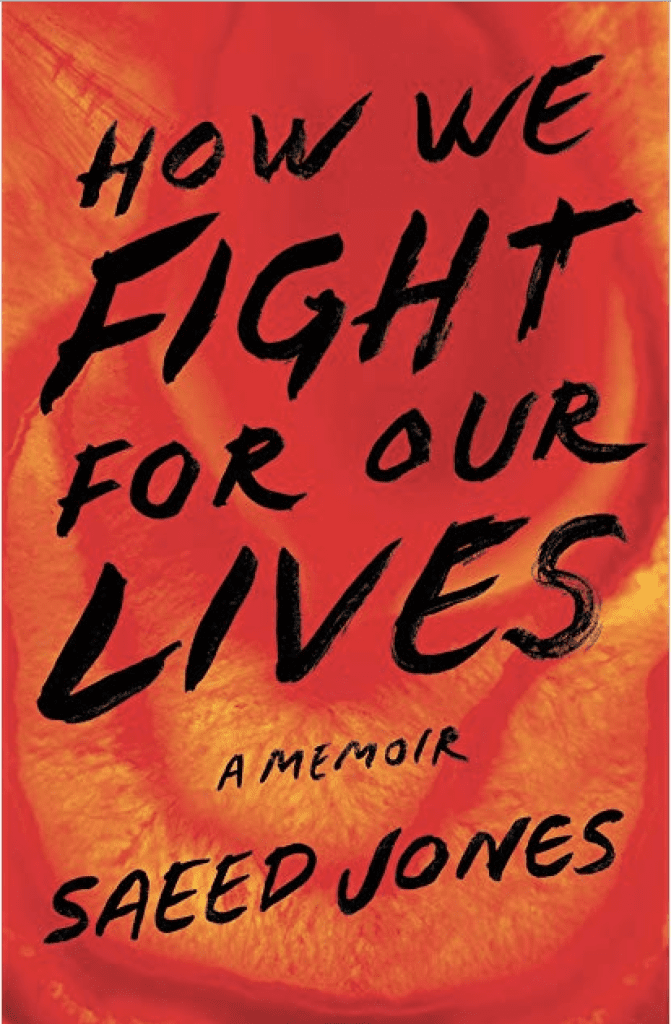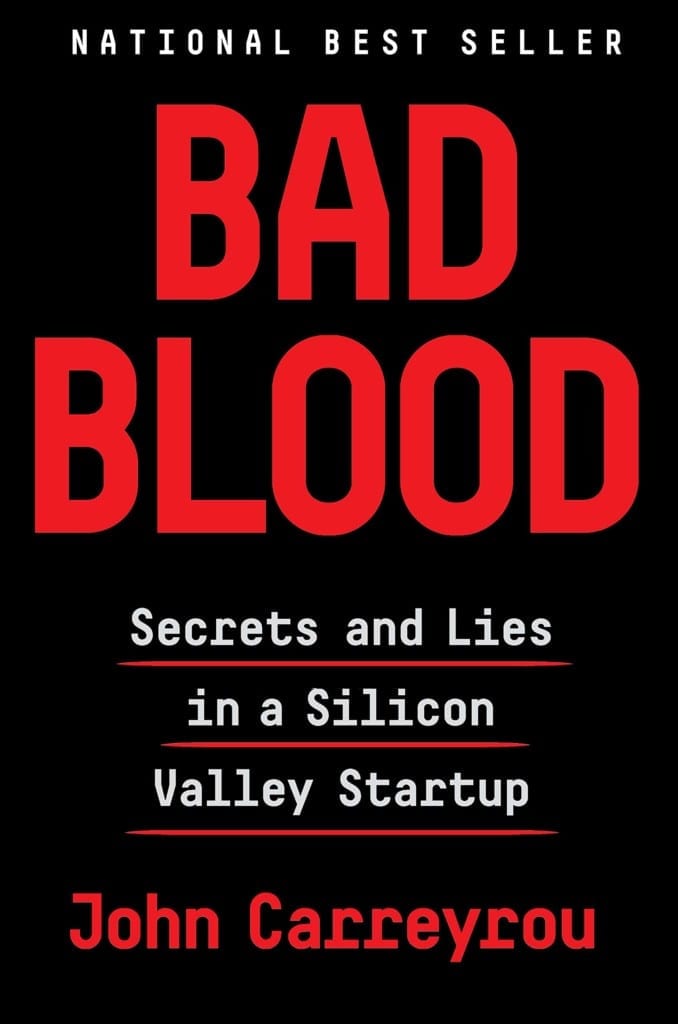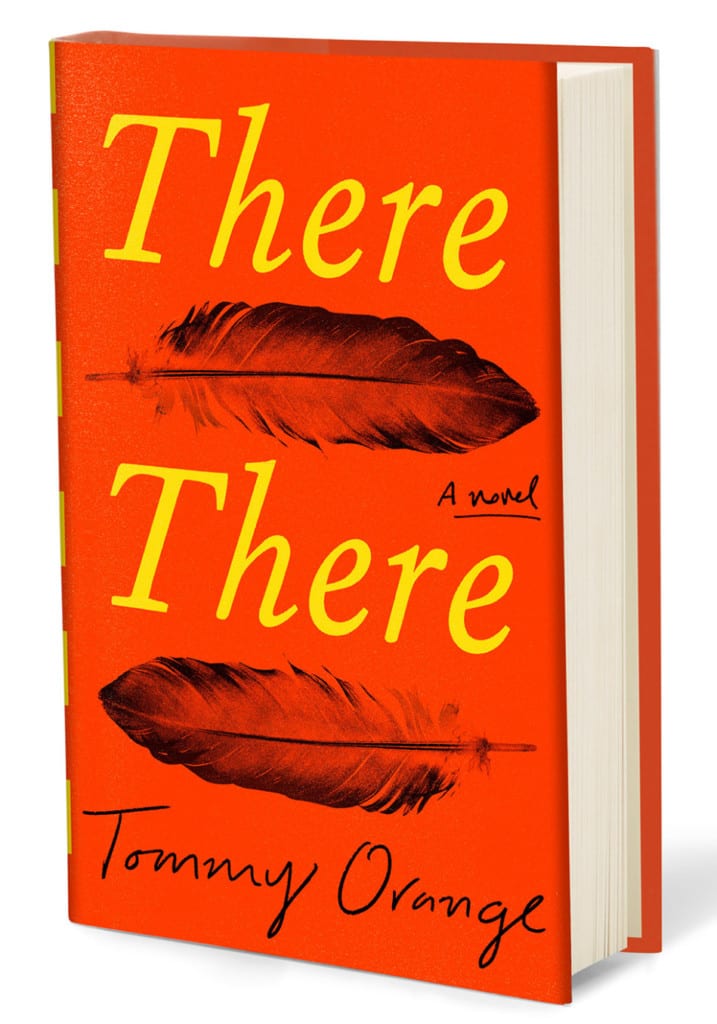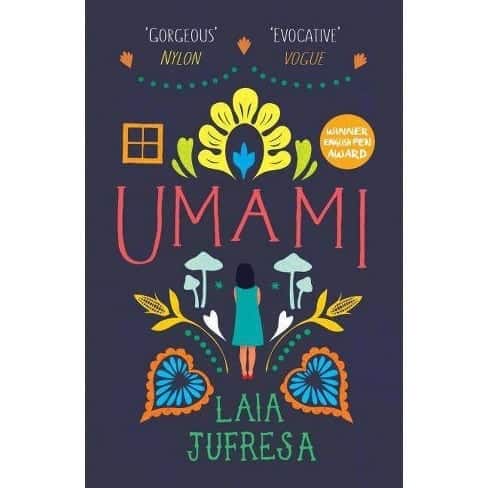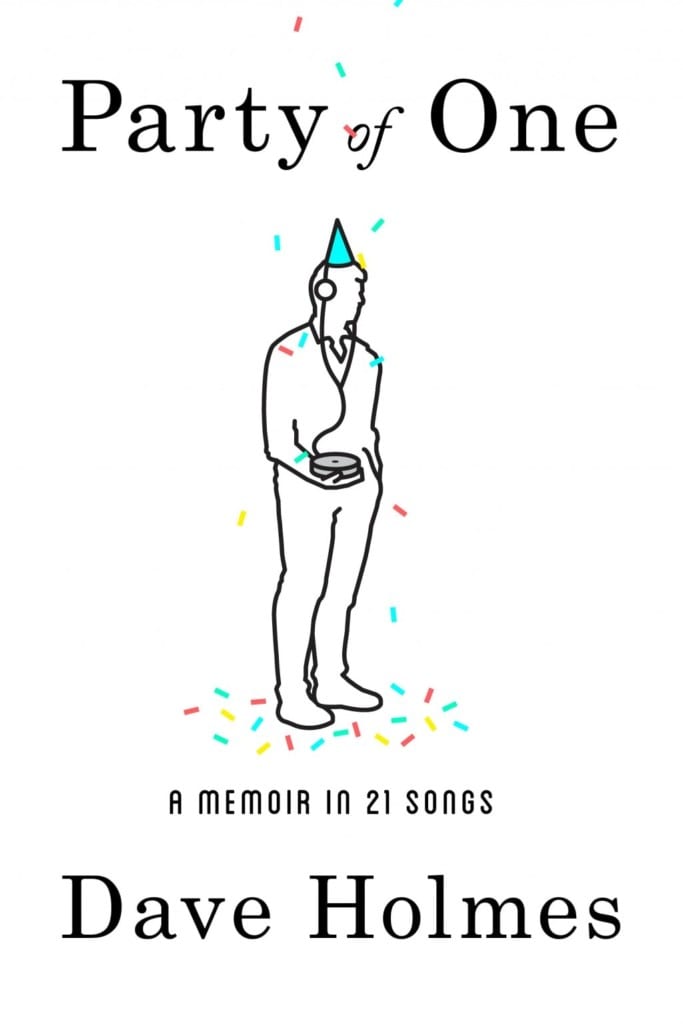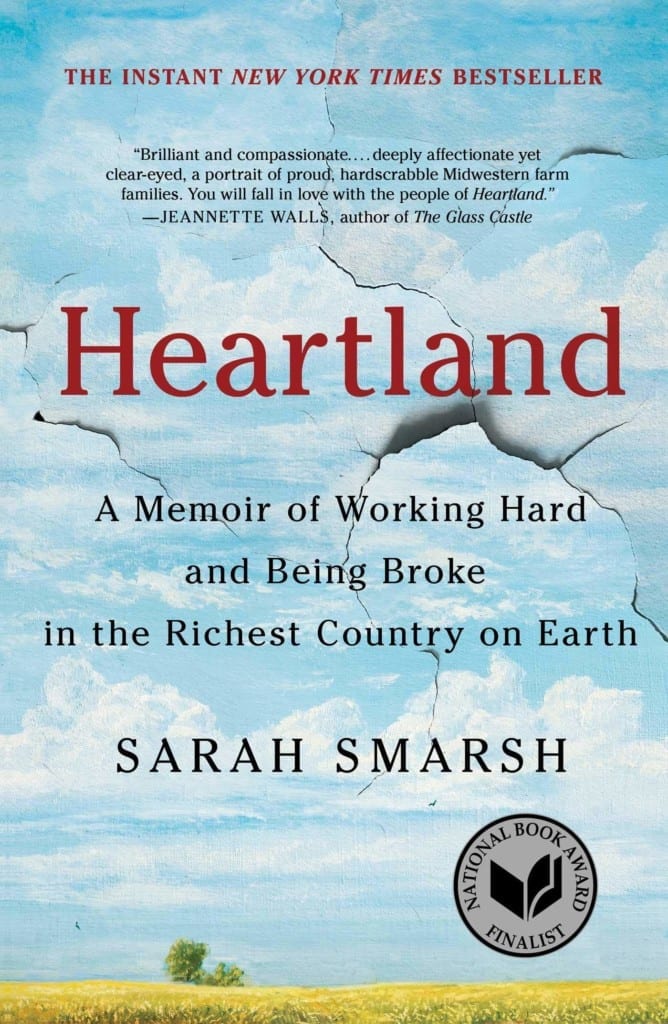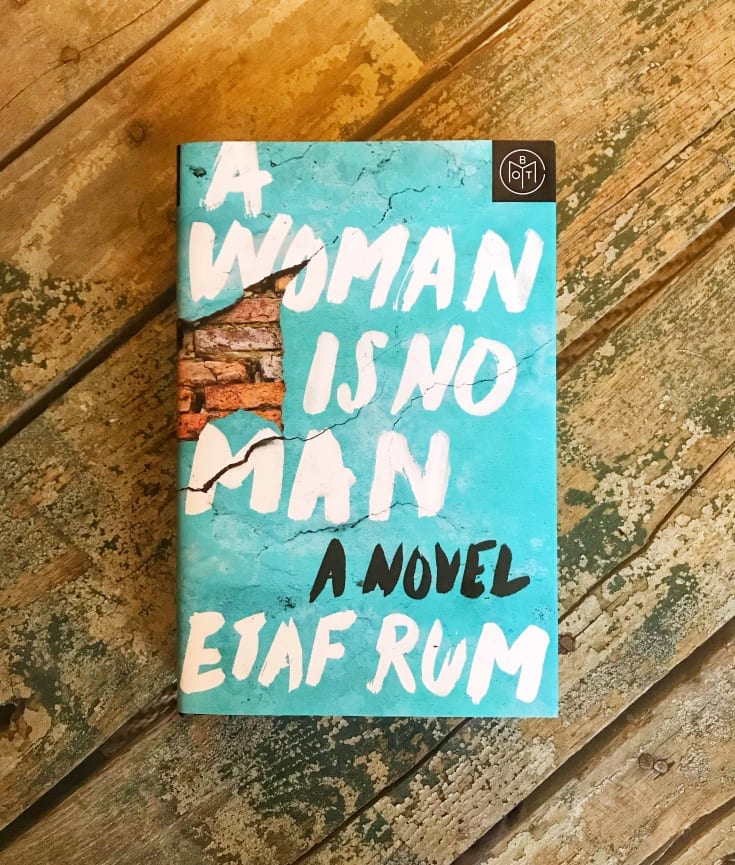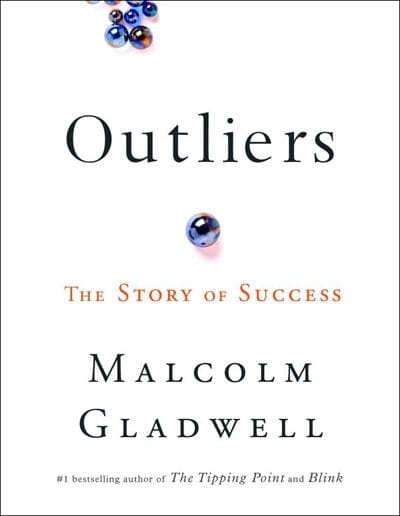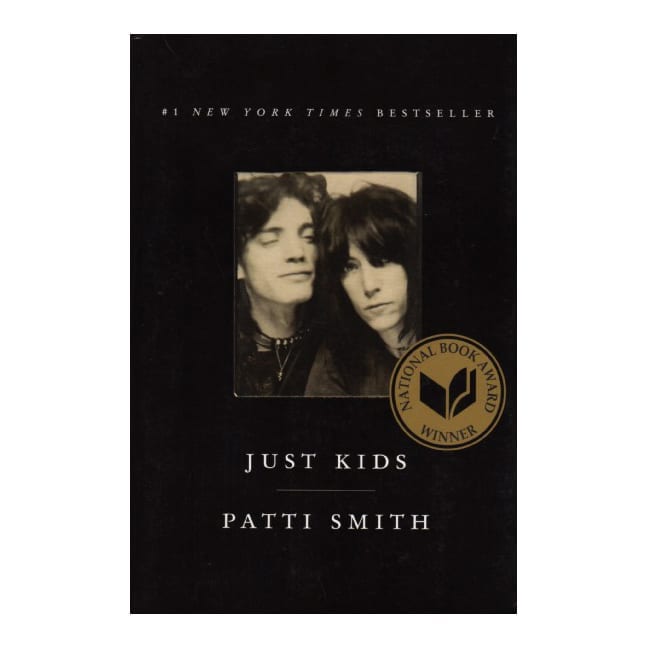Adventurous Kate contains affiliate links. If you make a purchase through these links, I will earn a commission at no extra cost to you. Thanks!
2019 was the year that my reading habits changed in a big way. While I’ve always been a big reader, I went into turbo-drive and broke my record of 72 books in one year! I’m currently at 79 and will probably finish a few more before the year ends.
How did I do it?
I got a library card and started borrowing books. This was the game-changer of all game-changers. I was a library fiend when I was younger, but I hadn’t borrowed anything in a long time, and never from the New York Public Library. You read so differently when it’s free. I’m saving upwards of $700 per year by borrowing. And I haven’t set foot in the library once — everything has been borrowed digitally!
I got into audiobooks. This was a side effect of joining the library — tons of audiobooks to borrow! I usually prefer listening to lighter memoirs and humor books in the audiobook format. Listening to them at 1.25 speed gets you through them faster without detracting from the experience.
I did a reading challenge based on diverse literature. The Book Riot Read Harder challenge is designed to get you reading books you wouldn’t ordinarily seek out, especially by underrepresented authors. Some of this year’s categories were a book about space by an author of color (I read Binti by Nnedi Okorafor), a comic by an LGBTQIA creator (World of Wakanda by Roxane Gay), and an #ownvoices author from Oceania (The Whale Rider by Witi Ihamaera).
Reading diverse authors requires you to actively seek them out — otherwise you’re going to end up reading books by people similar to you. If you make an effort, it pays off. Of these 16 top books, four are by white women, four are by women of color, two are by white men, six are by men of color, and at least five are by queer authors.
So what were the best books of the year? Here we go…
City of Girls by Elizabeth Gilbert: My Favorite Novel Published in 2019
“Never has it felt more important for me to tell stories of joy and abandon, passion and recklessness. Life is short and difficult, people. We must take our pleasures where we can find them. Let us not become so cautious that we forget to live.”
It’s New York in 1940. World War II is dominating the news. Vivian Morris has failed out of Vassar College and in a fit of desperation, her parents send her to live with her Aunt Peg in New York City. But little do they know what they’re sending her into. Peg runs an independent theater and soon Vivian is swept up not only in the theater scene, but booze, men, and all-night parties. When one wild decision she makes has devastating consequences, it reverberates among the people who love her most, just as America enters the war.
Oh my GOD, this novel. Elizabeth Gilbert is a fantastic writer, one who gets far more hate than she deserves. As much as I love Gilbert’s nonfiction, I think fiction is where she shines the strongest, inventing so many multifaceted characters who I was dying to spend more time with. I actually miss these characters today! But the greatest character of all is New York in 1940, from the flung-together cabaret shows to the supper clubs that she and her friend would sneak into, and all the men who would take them out carousing.
This novel is rich in the most wonderful way. So many layers of characters and setting and plot points. I love that many of Gilbert’s novels (like The Signature of All Things, another favorite of mine) are so layered and complex that they wouldn’t make good screen adaptations. (That was the problem with the movie version of Eat, Pray, Love — it’s her writing that makes it magical, and that didn’t translate to the screen.)
I lost myself in this book more than any other book I read this year. Currently looking for another book that makes me feel the same way!
In the Dream House by Carmen Maria Machado: My Favorite Nonfiction Book Published in 2019
“I think a lot about queer villains, the problem and pleasure and audacity of them. I know I should have a very specific political response to them. I know, for example, I should be offended by Disney’s lineup of vain, effete ne’er-do-wells (Scar, Jafar), sinister drag queens (Ursula, Cruella de Vil), and constipated, man-hating power dykes (Lady Tremaine, Maleficent). I should be furious at Downton Abbey’s scheming gay butler and Girlfriend’s controlling, lunatic lesbian, and I should be indignant about Rebecca and Strangers on a Train and Laura and The Terror and All About Eve, and every other classic and contemporary foppish, conniving, sissy, cruel, humorless, depraved, evil, insane homosexual on the large and small screen.
And yet, while I recognize the problem intellectually—the system of coding, the way villainy and queerness became a kind of shorthand for each other—I cannot help but love these fictional queer villains. I love them for all of their aesthetic lushness and theatrical glee, their fabulousness, their ruthlessness, their power. They’re always by far the most interesting characters on the screen. After all, they live in a world that hates them. They’ve adapted; they’ve learned to conceal themselves. They’ve survived.”
One of my favorite things is when an author puts two seemingly random topics together and works them into a cohesive, fascinating book. (Lionel Shriver is great at this — she mixes anthropology and May to December romances, or ambivalent motherhood and school shootings, or alternate endings and snooker.) In this incredible memoir, Carmen Maria Machado mixes queer domestic abuse and literary genres.
Machado began a relationship with “the woman from the Dream House” in her twenties, while studying at the Iowa Writers’ Workshop. Over time, her girlfriend became verbally and physically abusive, from manipulating her, picking fights, screaming at her, physically harming her, throwing things at her, gaslighting her the next day. This memoir chronicles the relationship with chapters in different literary styles.
Dream House as Stoner Comedy. Dream House as Noir. Dream House as Set Design. Dream House as American Gothic. Dream House as Queer Villainy. Dream House as Lesbian Pulp Novel.
Each chapter is very short — yet somehow, it fits together seamlessly, like the literary styles were only chosen afterward for an already completed memoir.
One of the toughest things about being in an abusive relationship is that so many people don’t believe you — abusers are often very charming and wear a different face in private. This is especially true for queer relationships, as they don’t fit the standard man-abuses-woman mold, many people can’t picture a woman as the abuser of her female partner. This is one of few narratives on domestic abuse in queer relationships, and because of this, Machado knows her responsibility and weaves in lots of research that she found.
This book is stunningly original and completely gripping. I plan on reading more of Machado’s work in the next year, including Her Body and Other Parties, which was nominated for the National Book Award in 2017.
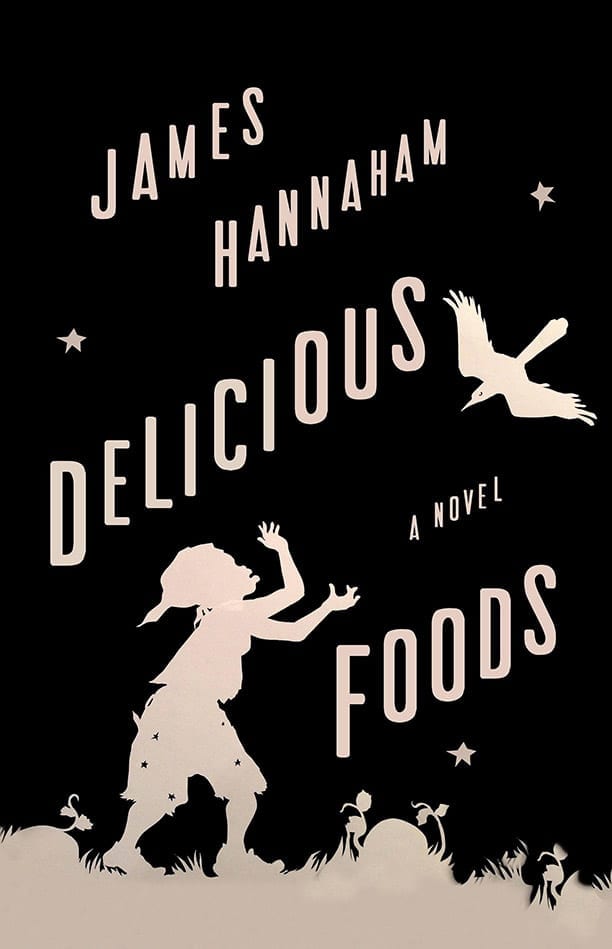
Delicious Foods by James Hannaham: My Favorite Novel Published Prior to 2019
“Everybody black knows how to react to a tragedy. Just bring out a wheelbarrow full of the Same Old Anger, dump it all over the Usual Frustration, and water it with Somebody Oughtas, all of which Bethella did. Then quietly set some globs of Genuine Awe in a circle around the mixture, but don’t call too much attention to that. Mention the Holy Spirit whenever possible.”
One of the elements in literature that I love the most is voice — especially when a novel is written in several different voices, each of them distinct and full of life. It’s why I adore Barbara Kingsolver’s The Poisonwood Bible and detest Veronica Scott’s Allegiant. But one of my favorite voices I have ever read in literature is the voice of crack cocaine, as imagined by James Hannaham in Delicious Foods.
Crack is one of the narrators in this horrifying novel based on a true human trafficking operation discovered in the US. After Darlene loses her husband, she falls into drug addiction. While out one night she is offered a job on a farm called Delicious Foods and she signs a contract — only to learn later that this is essentially a human trafficking operation that uses drug addicts for slave labor and has them amass debts they’ll never be able to repay. Darlene’s 11-year-old son Eddie tracks her down and becomes imprisoned at Delicious Foods himself.
The book is engrossingly horrendous. But the voice of crack is what I’ll remember — seductive, playful, manipulative, fun. I couldn’t wait to spend more time with crack; I was craving it when I was apart from it. And that’s the miracle of this book — Hannaham shows the allure of this drug to a sober audience, simply with the power of language.
How to Write an Autobiographical Novel: Essays by Alexander Chee: My Favorite Nonfiction Book Published Prior to 2019
“What if the novel in you is one you yourself would never read? A beach novel, a blockbuster, a long, windy, character-driven literary drama that ends sadly? What if the one novel in you is the opposite of your idea of yourself?”
There are so many successful memoirs on the bestseller lists today that it seems like anyone could write successfully about their own life. Then you read a book like this and realize that writing may be one skill, but writing thoughtfully about one’s own life is in a completely different category.
This book is about identity, writing, and theme. As a queer biracial Korean-American man, Chee had no literary role models for guidance as he grew up. In some ways, he felt like he had to invent his own genre. It’s not just about writing, it’s about figuring out what moments add up to the novel of your life, the story that is greater than the sum of its parts. For Chee, it starts with the summer he spent in Mexico as a teenager and how he achieved fluency within a few months — a tool to remake his identity into something completely new (on a dare, he even passed as a cousin visiting from Tijuana!).
Not only is this book incredibly useful, it’s utterly engrossing. I’m inspired to read a lot more of Chee’s work next year. He’s probably my favorite new author that I discovered this year.
As someone who has been regularly writing about her life for 17 years and doing so professionally for nearly a decade, I found this book to be essential reading and an encouragement to seriously step up my game.
The Last Black Unicorn by Tiffany Haddish (2017)
“That man hadn’t wanted to dance at first, and I made him, and then I booty popped him . . . and now he’s dead! I just felt like a booty assassin.”
There is one thing that I need to say at the beginning of this review: LISTEN TO THE AUDIOBOOK. This is one of the times that the audiobook is far better than reading the actual book. Tiffany Haddish’s voice and her comedic cadence add so much to this book. Audio only!! This is a great choice if you’re going on a long drive with someone.
Comedian Tiffany Haddish broke out in 2017 as the scene stealer in Girls Trip. Shortly after, she became the star of the talk show circuit as she told stories that were ultimately included in this memoir. I have never seen Jimmy Kimmel or Trevor Noah laugh so hard while interviewing a guest.
This is, without a doubt, the funniest book I read in 2019. Haddish tells some truly insane stories — the Roscoe story in particular is one for the ages. She grew up in South Central Los Angeles and spent time in foster care. Her talents for comedy were discovered as a teenager and she ended up going to comedy camp, becoming her school mascot (and getting PAID for it because she was so good) and eventually becoming an emcee for bar mitzvahs! That quote above is from when an elderly guest died after dancing with her at an event. Haddish is the kind of person who you’re rooting for to succeed, and you’ll laugh constantly through this amazing book.
One other interesting thing — this book was cowritten by Tucker Max. In my early twenties I was obsessed with Tucker Max’s book I Hope They Serve Beer in Hell. Some of his stories had me laughing so hard I was in tears. Truthfully, I wouldn’t have been a fan of that book today because I’ve grown as a person and Max is such an ass to women. But he claims to be a changed man today, and if he’s genuinely using his talents to elevate a woman of color, it sounds like he’s serious about it.
How We Fight For Our Lives by Saeed Jones (2019)
“I was walking through a dusty, fluorescent-lit hallway — halfway to the assembly hall, trying with every filament of my body to look cool — when the two truths finally collided:
Being black can get you killed.
Being gay can get you killed.
Being a black gay boy is a death wish.“
If you read a memoir by a poet, you’re in for a treat. They treat every word of prose with the utmost care, as if wrapping a present with a perfectly matching ribbon and bow. Saeed Jones first came to fame as a poet, but this memoir is a thing of utter beauty.
Jones grew up in a small town in north Texas, the only child of a single mother. He knew he was gay from a young age and did his best to keep it under wraps, but once going to college, he was able to flourish in a new way and slowly grow to being the person he was meant to be.
This is one of the most intimate memoirs I’ve ever read. I felt like I was living his relationships with his family — especially when his mother told him that they didn’t have enough money for him to go to NYU, his dream school, and when his grandmother joined a more fundamentalist church and began to reject him and his mother due to their being Buddhists. Some of the moments in the memoir are so uncomfortable that I found myself struggling with pain. It takes a major gift to bring a reader in so closely.
If you follow Jones elsewhere (and I love following him on Twitter), you’ll know that he’s recently moved from New York to Columbus, Ohio — a seemingly random decision considering that he has no roots there. But he is SO happy. And seeing the happiness he has found in this mid-sized midwestern city, a place where groups of older black men laugh “the way black people laugh in Toni Morrison novels,” makes me want to stick with him for a long time. I can’t wait to see what he writes next.
Bad Blood: Secrets and Lies in a Silicon Valley Startup by John Carreyrou (2018)
“The way Theranos is operating is like trying to build a bus while you’re driving the bus. Someone is going to get killed.”
Elizabeth Holmes was hailed as the next Mark Zuckerberg or Bill Gates. She dropped out of Stanford at age 19 to focus on her startup, Theranos: a medical company where hundreds of tests could be performed using just a single drop of blood. It was going to revolutionize the healthcare industry. Soon the company was valued at $10 billion and Holmes was the world’s youngest self-made female billionaire.
There was just one problem. The technology didn’t work.
And the company circled the wagons and tried to keep the world from finding out the truth. John Carreyrou tells the story at a breakneck pace, and it gets more and more bonkers by the minute.
Man, I cannot get ENOUGH of the Theranos story. I was on the edge of my seat from start to finish. There is so much detail and the story goes places you don’t expect. Since reading the book, I’ve listened to The Drop Out podcast and have read everything else I could get my hands on. I’m looking forward to the two upcoming features about Elizabeth Holmes — a TV series starring Kate McKinnon and a film starring Jennifer Lawrence.
Another thing — if you’re like me and not into violent true crime, this is an excellent nonviolent alternative.
There There by Tommy Orange (2018)
“If you were fortunate enough to be born into a family whose ancestors directly benefited from genocide and/or slavery, maybe you think the more you don’t know, the more innocent you can stay, which is a good incentive to not find out, to not look too deep, to walk carefully around the sleeping tiger. Look no further than your last name. Follow it back and you might find your line paved with gold, or beset with traps.”
When you think of Native Americans living in the US today, what comes to mind? Protestors fighting at Standing Rock? Reservations in Arizona where women sell their bracelets by the side of the road? Anything contemporary at all?
I’m fairly certain it’s not people living in an urban setting. But that’s what There There is about — Indians living in and around Oakland, California, today. (After growing up being told, “It’s Native American, not Indian!” I was surprised to learn that “Indian” is actually a correct and respectful term for indigenous people in the United States today.) Orange’s novel tells the story of a dozen Native characters getting ready for Oakland’s annual powwow.
There is the teenager who has been kept from his Indian heritage his entire life, who teaches himself the powwow dances on YouTube. The woman fleeing her abusive husband in Oklahoma, the statistics of missing and murdered Indian women fresh in her mind. The documentary filmmaker eager to tell Indian stories. They eventually all come together at the powwow, which erupts in conflict.
Books like this are why I make an effort to read diverse authors — this book was pure enlightenment. I had no idea of some of the historic events mentioned in this novel, like when Indians occupied Alcatraz in the 1970s. I’ve never read anything by a Native author that takes place in the present day. This novel is well worth a read and I hope Orange publishes another book soon.
Umami by Laia Jufresa (2017)
“Nobody warns you about this, but the dead, or at least some of them, take customs, decades, whole neighborhoods with them. Things you thought you shared but which turn out to be theirs. When death does you part, it’s also the end of what’s mine is yours.”
The Belldrop Mews, a building comprised of several ground-level apartments in Mexico City, is home to several families struggling with death and grieving. In one home, a man grieves his wife after a mostly happy lifelong relationship and muses on the good and bad parts of their life together. In another, a young girl yearns for her mother, who disappeared without a note. In a third family, a mother struggles to get her life back together after losing a child, while her other children struggle in their own way.
What I loved about Umami is that it’s so utterly compassionate to all the characters. They have their eccentricities — and if you’re halfway through and wondering where the weird parts are, don’t worry, it’s coming — but are treated with such kindness. The book accepts them as they are. Reading this book feels like the words are gently floating around you. Despite the subject matter, it’s life-affirming.
Laia Jufresa is Mexican and I read this book while in Mexico. I highly recommend reading books by local authors in the destinations you visit. If you’re planning an upcoming Mexico trip, especially to Mexico City, consider taking this book with you. While I often don’t enjoy translated books, this one is translated beautifully.
Party of One: A Memoir in 21 Songs by Dave Holmes (2016)
“At the time of writing, both of my brothers listen to Toby Keith and my parents pretty much exclusively watch Fox News, at the volume level of a My Bloody Valentine concert. It’s heartbreaking, but at least they left me something valuable before they checked out.”
I was a teenager when MTV’s TRL was at its height, the Backstreet Boys and Korn duking it out for the #1 spot each day. During that time, there was a Wanna Be a VJ contest. The crazy guy, Jesse Camp, won — but the runner-up, Dave Holmes, ended up with his own job at the network. Dave was the smart guy, the knowledgeable guy, the incredibly affable guy. The kind of guy who I would be rooting for at age 35, as opposed to the weird white dude with purple dreadlocks when I was a teenager.
Today Dave is an editor at Esquire and an all-around entertainer. This is the story of his life — growing up as a music fanatic, coming out as a teenager, surviving college in the 90s when queer students were encouraged to stay quiet, putting together his early adult life in New York, and just going for that crazy VJ contest that turned into a career.
Every now and then, I meet a person and just get endless good vibes from them. Dave is one of those people. I have so much respect for Dave due to his refreshing honesty! He put the work in, quietly, when so many people weren’t. He came into MTV brimming with musical knowledge. Even during the VJ contest, he refused to get caught up in the madness and spent his time collecting business cards and making connections when the cameras were turned off, hoping to get a job behind the scenes when the contest was over. The first time he heard a pop song and didn’t really get it and realized it was because he was in his thirties, I felt that. And even the one time he did cocaine, he LOVED it enough to realize he should never try it again.
Best of all came near the end, when he did some San Pedro in a canyon in California and hoped for enlightenment of somehow — and realized that he was already comfortable with the person he was, hanging out on his own and listening to music. We should all be that comfortable on our own.
Heartland: A Memoir of Working Hard and Being Broke in the Richest Nation on Earth by Sarah Smarsh
“When she told me the story, it was about a day she barely survived because of my dad’s absence. I see it now as a day she barely survived because society valued productivity and autonomy more than it valued women and children.”
Over the last several years, there have been several bestsellers about poverty in America today. My absolute favorite, the one book that I urge every American to read, is Evicted by Matthew Desmond — but Heartland is an excellent read as well. Smarsh grew up poor and white in Kansas, coming from a long line of farmers on her father’s side and teen mothers on her mother’s side.
Smarsh was able to break the cycle by going to college and becoming a journalist, and this book marries research and journalism with memories from her youth. For example, she talks about how it was unheard of to see people in political t-shirts growing up, but now they’re everywhere, and she backs that up with data on polarization in voting over the last 30 years.
I wrote in my original review, “This is the book that Hillbilly Elegy wishes it was,” and I stand by that. Additionally, this book goes far beyond Maid by Stephanie Land, a major bestseller about poverty that I read earlier this year. As much as I love reading memoirs, they only go so far when they are about complex issues like poverty in America. This book is far more robust and backed up with much more contextual research that helps you understand the background.
If I had to edit each popular book about poverty down to a sentence, this is what they would be:
Evicted: Poor people are barely able to survive because rent has risen sharply while wages and benefits have stagnated.
Heartland: Poor white people don’t believe themselves to be poor and vote against their interests because they believe welfare recipients of color are the enemy.
Maid: Poverty takes enormous tolls on your physical and mental health and that makes it several times harder to just stay above water, let alone get yourself out.
Hillbilly Elegy: Poor people are poor by choice and wouldn’t be poor if they made more of an effort.
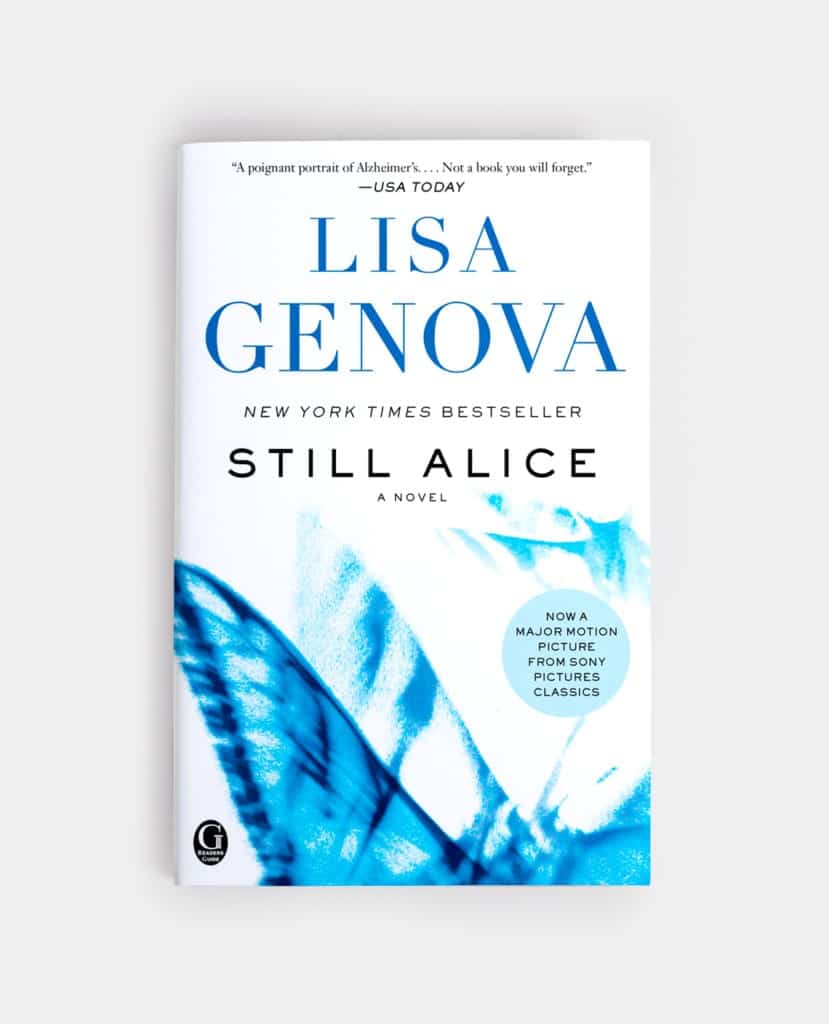
Still Alice by Lisa Genova
“And I have no control over which yesterdays I keep and which ones get deleted. This disease will not be bargained with. I can’t offer it the names of the US presidents in exchange for the names of my children. I can’t give it the names of state capitals and keep the memories of my husband.”
Dr. Alice Howland has it all — she’s an accomplished psychology professor at Harvard, she has a wonderful marriage, she has three loving children, she runs and travels and reads and has a rich, fulfilling life. As she turns 50, she notices she’s a bit more forgetful lately — but after being unable to read the word “lexicon” out loud in a presentation, she decides to see a doctor, and she is diagnosed with early-onset Alzheimer’s.
The book tells Alice’s story through her voice as she loses her memories, and over time the book becomes simpler as she stops understanding the world around her and the changing relationships in her life. The best example is that she periodically asks herself the same list questions: “Where do you live? When is your daughter’s birthday?” and over time the answers become more vague (“Cambridge,” “Spring”). By the end, Alice is nothing like the character at the beginning of the book, but there are still moments of happiness and meaning in her life.
This was, without a doubt, the scariest book I read this year — just the thought that at the age of fifty you could lose all your memories so quickly that you require round-the-clock care within months, and that your children had a 50% change of inheriting the same disease. I read the whole thing in a day and months later, I’m still thinking about it. What a book. (It’s worth mentioning that author Lisa Genova is a neuroscientist.)
Julianne Moore won an Oscar for her role in the film adaptation of Still Alice. It’s a great, if sad, watch.
A Woman is No Man by Etaf Rum (2019)
“That was the real reason abuse was so common, Isra thought for the first time. Not only because there was no government protection, but because women were raised to believe they were worthless, shameful creatures who deserved to get beaten, who were made to depend on the men who beat them.”
Imagine making it to America, the land of opportunity, and learning that it means nothing. You’re held in your home as a virtual prisoner, seldom stepping outside the walls, and subject to increasing abuse with every daughter you bear. There is no way out. This novel tells the story of three generations of Palestinian-American women living in Bay Ridge, Brooklyn: 19-year-old Isra, a new wife and immigrant from Palestine; her cruel mother-in-law Fareeda; and her daughter Deya in the future, being pressured to marry at age 17.
I love reading books about New York and New Yorkers, but the most popular books are disproportionately about wealthy, white New Yorkers. This book is about immigrants, the people who you see on the subway, waiting on you in shops, and living in your neighborhood. And what surprised me the most is that there are still communities in New York today where teenage girls pretty much go to strict Islamic schools and marry directly out of school, moving to a new home in Bay Ridge and barely setting foot outside.
What this book hits home the most is that women are irrelevant and no matter what, they will always be held separately. Of course, the degree of this varies in each society, but the impact is the same.
Outliers: The Story of Success by Malcolm Gladwell (2008)
“Practice isn’t the thing you do once you’re good. It’s the thing you do that makes you good.”
Why do some people become wildly successful and others never get recognition? We’re under the impression that people succeed because they’re smart and work hard, but one of the biggest factors is focusing on a particular skill before it becomes a relevant career. Outliers examines the factors that led to these successes (as well as the failures).
Bill Gates became the titan that he is because he had unprecedented access to a computer lab in high school and was leaps and bounds ahead of his peers in practice. Most Canadian professional hockey players were born in the first three months of the year because they were the oldest children in the youth hockey leagues. Korean airlines were among those most likely to crash because Korean culture dictates that you’re never supposed to confront your superior when he or she does something wrong.
I enjoyed this book so much that I wrote a whole post about how I was an outlier in travel blogging. This book was incredibly interesting (though I don’t recommend reading the book about plane crashes while you’re actually on an airplane) and it gave me a perspective on success. Whatever you’re into, even if you’re not sure it can be a career, practice it like crazy and you’ll be ahead of your peers.
I used to joke in college that my dream job was to get paid to blog about my life. That was absurd back then — but I blogged constantly anyway because I loved it. And I’ve done it for a living for nearly a decade and make more money than I ever did at a “regular” job.
Just Kids by Patti Smith (2010)
“I imagined myself as Frida to Diego, both muse and maker. I dreamed of meeting an artist to love and support and work with side by side.”
In 1967, Patti Smith left her Pennsylvania home for New York City. She was broke, had no plans, and cared only about making art. As she scrounged through the city, she kept running into a tall, gentle artist named Robert Mapplethorpe. The two of them became friends, then lovers, then friends again, existing on little money and just creating, creating, creating. He was a visual artist; she was a poet and sometime painter. Over the years, they lived with the bohemian fringe of New York City, including at the Hotel Chelsea.
This book is a love story, written in a gentle, ethereal, compassionate voice that feels everything deeply. A lot of people think that soul mates have a narrow definition — two people who were in love and stayed together forever. But these two were something even stronger than that — they were each other’s maker and muse. They were more vulnerable with each other than they were with anyone else. They went through the worst of times and best of times together. They stayed loyal friends until Mapplethorpe’s death. So much art was brought to this world because of their friendship, and they made each other better artists.
And this is a bit of a love story to New York, too. It’s easy to be nostalgic for an era when you elegize the bohemian, artistic community and concentrate less on the parts where you were constantly worried about money. That’s a community that doesn’t exist in New York anymore.
Just Mercy: A Story of Justice and Redemption by Bryan Stevenson (2014)
“The true measure of our character is how we treat the poor, the disfavored, the accused, the incarcerated, and the condemned.”
We are more than the worst thing we’ve ever done. That’s the point that Just Mercy makes — that people who commit grievous crimes should not be denied basic humanity for the rest of their lives.
I’ve always been against the death penalty. When I was younger I said it was because it got criminals off too easy; as I got older, I pointed out the need for actual rehabilitation, the way prison is done in Scandinavian countries. But today my top reason is because too many innocent people are sentenced to death and executed. Do you think that wrongful convictions are rare, like maybe one per year? Not at all. Wrongful convictions happen all the time.
This book tells the story of Walter McMillian, a man wrongfully accused of murder and sentenced to death. His story is like that of so many others — the police can’t find a killer, so they pin the case on a local black man, often mentally ill, with a less-than-immaculate record; then move to restrict evidence, rig the trial to take place in a wealthy white county, and swiftly convict. This happens all the time in the US. But it especially takes place often in the south, the region where the death penalty is most prevalent.
This book is moving and eye-opening. And Bryan Stevenson is a hero. Imagine going to Harvard Law and deciding to spend your life helping the most vulnerable when you could easily become insanely rich instead. I would love to see some of my friends who are vehemently pro-death penalty see if they still feel that way after reading this book.
And a few words on the worst reads of the year…
I don’t usually rag on authors I don’t like — I appreciate how hard they’ve worked and the vulnerability it takes to put your work out there to the world. Most of them fall under the “Good for you, not for me” category. But there are a few books I read this year that deserve noted criticism:
Underground Airlines by Ben H. Winters is a complete cringe from start to finish. This is an alternate history novel about how slavery never ended in the US. How novel, a white author imagining a fantasy where black people are treated even worse than they are now! The plot is a mess, but the worst part is that the book is narrated by a black man but I’m fairly certain that the author has never spent significant time with any black people.
Tools of Titans by Tim Ferriss has some valuable insights, particularly on the importance of meditation, but it’s pretty glaring when you interview more than 100 high achievers and choose to only include one woman of color — Margaret Cho — and give her the shortest profile in the book. It basically says that women of color’s stories and lessons aren’t relevant, when in fact they’re the ones we should be listening to most closely.
High Achiever by Tiffany Jenkins is the worst kind of memoir: the kind with a complete lack of self-awareness. She says nothing about the fact that she spent a ludicrously short time in prison (120 days) for more than 20 felonies, including selling her cop boyfriend’s guns to drug dealers. It was all due to her privilege and yet she complains incessantly about how difficult it all was.
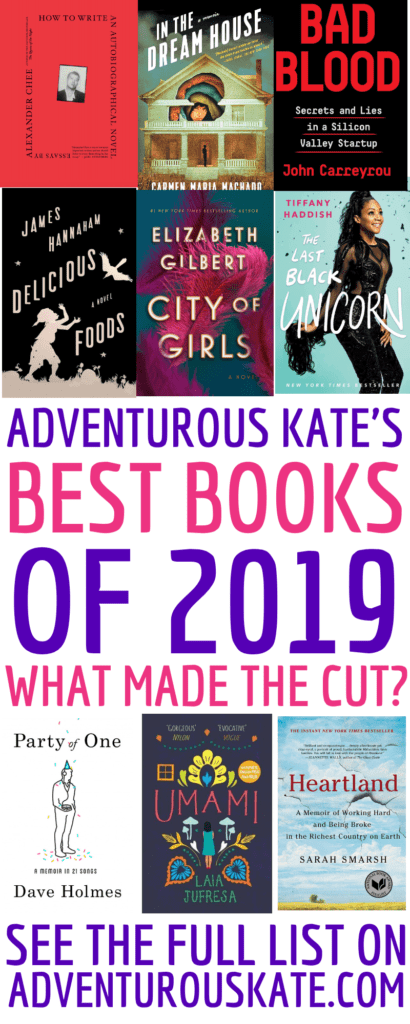
What were the best books you read this year?
